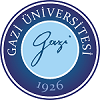
Send us your opinions, requests and evaluations.
AUDITORY REHABILITATION UNIT
What is Audiological Rehabilitation?
Auditory rehabilitation, which is also called audiological rehabilitation, hearing rehabilitation and rehabilitative audiology is; improving understanding and speaking skills for children and adults who use hearing device and/or cochlear implant due to hearing loss.
What are the Aims of Auditory Rehabilitation?
What Does Auditory Rehabilitation Include?
It includes basic auditory and listening trainings for children and adults with hearing loss.
In the auditory rehabilitation process, a personalized program should be prepared initially. During the preparation process, necessary evaluations are made by considering the type and degree of hearing loss of the child / adult, age of diagnosis and device use, communication and language skills. The content of the program should cover all areas of development that the individual needs.
As content; auditory perception development, language and speech development, speech sounds development, support of communication and social skills can be counted.
The development of auditory perception includes the stages of phonological awareness, phonologic recognition, phonological discrimination (two or more speakers, similarity/difference between environmental stimuli) and understanding / conceptualization (matching the sound heard with meaning).
Language and speech development is receptive and expressive language development. Skills in the use of structures related to the use of syntax (grammatical structure), semantics (content), morphology, phonology and pragmatic language (use of language in different social situations), which are components of the language, are supported. Age-appropriate concept development training, auditory detection of speech sounds and their recognition and distinction in syllables, words and sentences are among the language and speech development stages supported in the process. In order to support speech production, educational support is also provided for the development of articulation skills.
Family involvement is extremely important in Auditory Rehabilitation, and using the device all day is a prerequisite for success in rehabilitation.
The final result desired to be achieved in the Auditory Rehabilitation process for children is the participation of the child in society as a productive and self-actualizing individual, who gains language and speech development, increases his academic, communicative and social skills, and has self-confidence.

Send us your opinions, requests and evaluations.